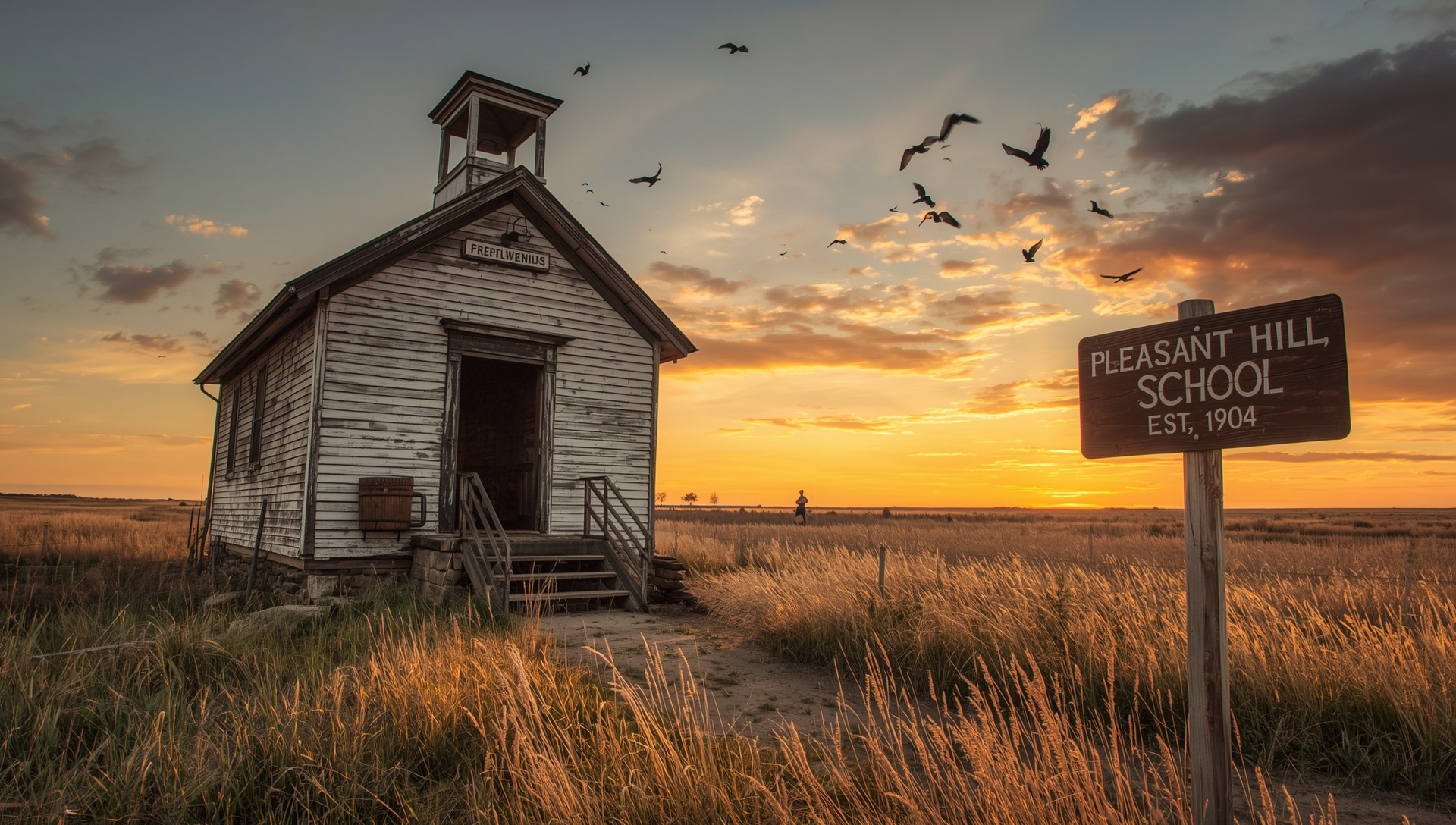The School Bell Still Echoes: What Happened to Our One-Room Schoolhouses?
Woodward Shoutouts
Archives
The School Bell Still Echoes: What Happened to Our One-Room Schoolhouses?
SIGN UP FOR OUR NEWSLETTER
The School Bell Still Echoes: What Happened to Our One-Room Schoolhouses? |
Inspired by true events in Woodward County, Oklahoma (1890s–1930s) |
Somewhere just west of Quinlan and two miles past a stand of blackjack oak, there's a patch of prairie where nothing grows quite right — the grass curls odd in the wind, and the dirt is darker, softer. The locals call it “the old Freezeout place,” though few remember why.
I came across it looking for ghosts.
Well — not ghosts, exactly. I was looking for a school. A one-room schoolhouse, to be precise. The kind where every kid from age six to fourteen sat in a single room and learned their letters, fractions, and patriotic poems under the hawk-eyed glare of a 17-year-old teacher barely out of school herself.
According to the county records — the few that survived mice, fire, and bureaucratic neglect — Woodward County once had over 120 of these rural schools. Names like Pleasant Hill, Happy Hollow, Hardscrabble, Sunny Slope, and Paradise dotted the county like quilt patches, each one a hub for the surrounding farms.
And then, like windmill blades rusting in the wind, they disappeared.
Anna’s Coal Stove
In 1918, a girl named Anna Johns took the reins at Happy Hollow School. She was 16. The ink barely dry on her teaching certificate, she walked or rode a mule to school, carried coal in a flour sack, and started the fire before dawn to keep the room tolerably warm. Some mornings the thermometer hit single digits, but the students came anyway — wrapped in feed-sack coats and ready for long division or Lincoln’s Gettysburg Address.
She made $65 a month. “Enough,” she later said, “to buy a pair of boots and a Sunday dress… and that was after saving for pencils.”
Anna didn’t just teach math and manners — she cooked. Kids brought potatoes, onions, and scraps in their lunch pails, and Anna, bless her heart, would make soup on the coal-oil stove in the back. That may have been the first hot lunch program in Woodward County.
She taught at Cedardale, Mayfield, Edmission. Schools that now exist only in the yellowing margins of family Bibles or the whisper of an old-timer sipping black coffee at the Mooreland café.
Consolidation: Progress or Funeral?
By 1968, most of those schools were gone — folded into Mooreland, Woodward, Sharon-Mutual. Buses replaced bare feet and mules. For some families, it was a blessing. Heat, plumbing, even science labs.
But for others?
“Well,” said one old farmer I talked to, “they didn’t just close the school. They closed the neighborhood.”
The schoolhouse was where the harvest dance happened. Where box suppers raised money for barn roofs. Where kids sang “Oklahoma Hills” with twangy pride. Losing them felt like pulling the nails from the floorboards of a community.
What’s Left?
Most of the buildings were bulldozed, burned, or left to collapse. One got turned into a granary. Another — in a burst of irony — became a voting precinct for the district that voted to shut it down.
Some names survive on brittle maps or land deeds. Others don’t even get that.
But a few things do echo:
Epilogue: A Visit
Not long ago, I walked the land where Paradise School once stood. It wasn’t much to see — just an indentation, some rusted fence wire, and a few nails I pocketed like relics. But I swear I heard something.
A breeze, maybe. Or maybe the ghost of Anna Johns calling the roll.
“Ritchey… Holloway… Brewer…”
And then silence.
What We Lost
We gained buses, broadband, and bigger schools. But somewhere along the way, we lost something small and sacred — the sound of a single bell echoing across the prairie, calling children not just to school… but to community.
|

